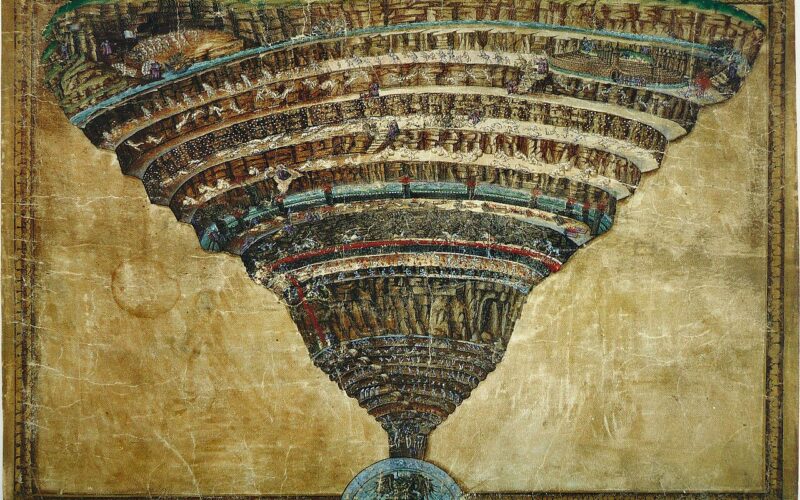At a recent literary event organized by FAI Giovani of Vercelli, Professor Francesco Toniolo presented an unusual and fascinating topic: “Dante Alighieri, the First Video Gamer.” If you’ve ever pictured Dante with a joystick in hand, this might seem like a peculiar association. But, examining the structure of Dante’s Inferno and comparing it to that of video games reveals an intriguing parallelism.
Looking at the structure of Dante’s Inferno, we find it composed of a series of circles, each dedicated to the punishment of a different sin. These circles can be likened to the various levels of video games. The “player,” Dante, must traverse them, facing a series of trials until reaching the final level. Here he finds the “final boss,” in the case of The Divine Comedy, it is Satan himself; he must defeat him to end his journey, his “game.” Each level he faces is, of course, more difficult than the last, requiring Dante to call upon all his resources—physical, intellectual, and spiritual—to overcome it.
This is remarkably similar to the structure of video games. Consider, for example, the well-known Super Mario: the resemblance is frankly striking. In this famous game, the player must overcome a sequence of levels, each peppered with characteristic obstacles and increasingly fierce enemies. The final showdown with Bowser is the culmination of this adventure. This pattern is not alien even in more modern video games, like Dark Souls: here, each level is configured as an enigmatic labyrinth of potentially fatal challenges, requiring the player to continuously refine their skills to advance in the game.
Another parallel lies in the narrative. In both cases, the story unfolds through action and exploration. In Dante’s Inferno, each circle reveals a new part of Dante’s vision of the afterlife. A progressive descent into increasingly difficult levels, which also involves reflection on the consequences of human sins. Similarly, in video games, the plot is revealed as the player progresses, often through dialogue, discoveries, and interactions with other characters.
Finally, both in the Inferno and in video games, there is a strong element of “retry.” Dante, despite the difficulties he encounters, continues his journey determined to reach his goal. In video games, the ability to “retry” after a failure is a key element: the player learns from their mistakes, hones their skills, and persists until they overcome the level.
Professor Toniolo’s proposal, therefore, is not as far-fetched as it might seem. Of course, Dante did not have access to a computer, let alone a video game. But his vision of the Inferno shares many elements with the medium of video games, enough to be considered, in a sense, a forerunner of it.
And who knows, the day may come when a video game faithfully reproduces Dante’s Inferno. The opportunity to navigate through the nine circles of Hell, confronting Dante’s vision of sin and redemption while comfortably seated in front of a computer, would be a truly unforgettable adventure. In the meantime, we will continue our journey through the various virtual worlds offered by video games, with the awareness that, in a way, we are following the path traced by the great Italian poet.













